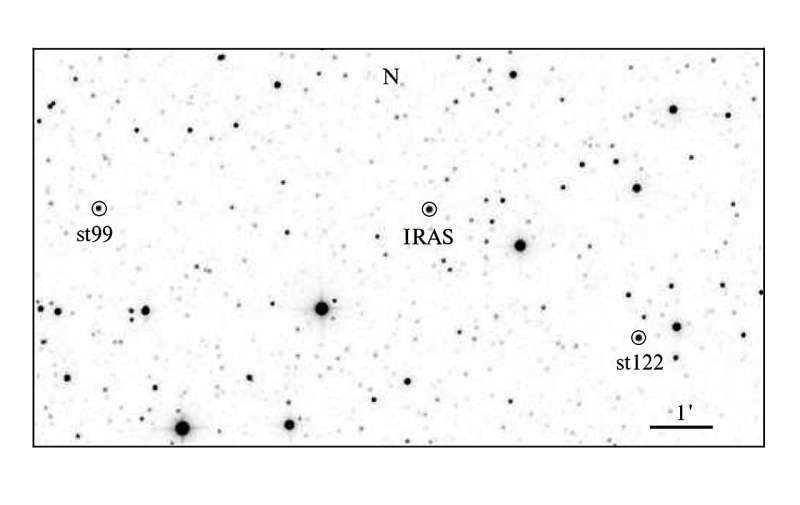July 31, 2023 report
This article has been reviewed according to Science X's editorial process and policies. Editors have highlighted the following attributes while ensuring the content's credibility:
fact-checked
preprint
trusted source
proofread
Observations explore the nature of infrared source IRAS 07253-2001

Using the Caucasian Mountain Observatory (CMO), Russian astronomers have observed a peculiar infrared source designated IRAS 07253-2001. Results of the observational campaign, published July 20 on the preprint server arXiv, reveal insights into the properties of this source, shedding more light on its nature.
Located about 32,500 light years away, IRAS 07253-2001 is an infrared source first identified more than three decades ago. It is a poorly studied source and its true nature is still unknown. Some studies have suggested that it may be a post-asymptotic giant branch (AGB) supergiant star about 54 times larger than the sun and surrounded by a dust shell with a radius of about 100,000 solar radii.
A team of astronomers led by Natalia Ikonnikova of the Lomonosov Moscow State University, Russia, decided to take a closer look at IRAS 07253-2001. They employed CMO's 60-cm Ritchey-Cretien telescope to conduct photometric and spectroscopic observations of this source. Their study was complemented by data from the All-Sky Automated Survey for SuperNovae (ASAS-SN).
"We present the new multicolor UBV RC IC Y JHK photometry obtained with the telescopes of the Caucasian Mountain Observatory and analyze it together with the data acquired by the All-Sky Automated Survey for SuperNovae," the researchers wrote in the paper.
The observations detected low-amplitude quasi-periodic brightness variability of IRAS 07253-2001, caused by pulsations. The variability has a main period of about 73 days and additional periods of 68 and 70 days. This variability pattern and pulsational periods are typical for post-AGB stars of F0–F8 spectral types.
Based on the ASAS-SN and CMO data, Ikonnikova's team also identified a long-term brightness variability with a period of approximately 1,800 days. The astronomers suppose that this is an orbital period of IRAS 07253-2001, making it a binary system at a distance of some 1,500 light years—therefore much closer than previously estimated.
The study detected forbidden emission lines radiated by a gas envelope in the spectrum of IRAS 07253-2001, most likely excited by the hot star in the system. Moreover, a variation of radial velocity with an amplitude of about 30 km/s was identified, which further supports the binary scenario.
The authors of the paper underlined that all the collected data indicate that IRAS 07253-2001 is a pos-AGB supergiant with an effective temperature at a level of 6,300 K, however its exact mass and chemical composition is yet to be determined by future studies.
"To obtain more reliable stellar parameters and to estimate abundances in the atmosphere a high-resolution spectroscopy combined with a non-LTE [non-local thermodynamic equilibrium] approach would be needed," the researchers concluded.
They added that the collected data covering a wide wavelength range from 0.35 to 2.2 µm will be helpful in modeling the spectral energy distribution (SED) of IRAS 07253-2001 and determining the parameters of its dust shell.
More information: N. P. Ikonnikova et al, The Post-AGB Star IRAS 07253-2001: Pulsations, Long-Term Brightness Variability and Spectral Peculiarities, arXiv (2023). DOI: 10.48550/arxiv.2307.10796
Journal information: arXiv
© 2023 Science X Network





















